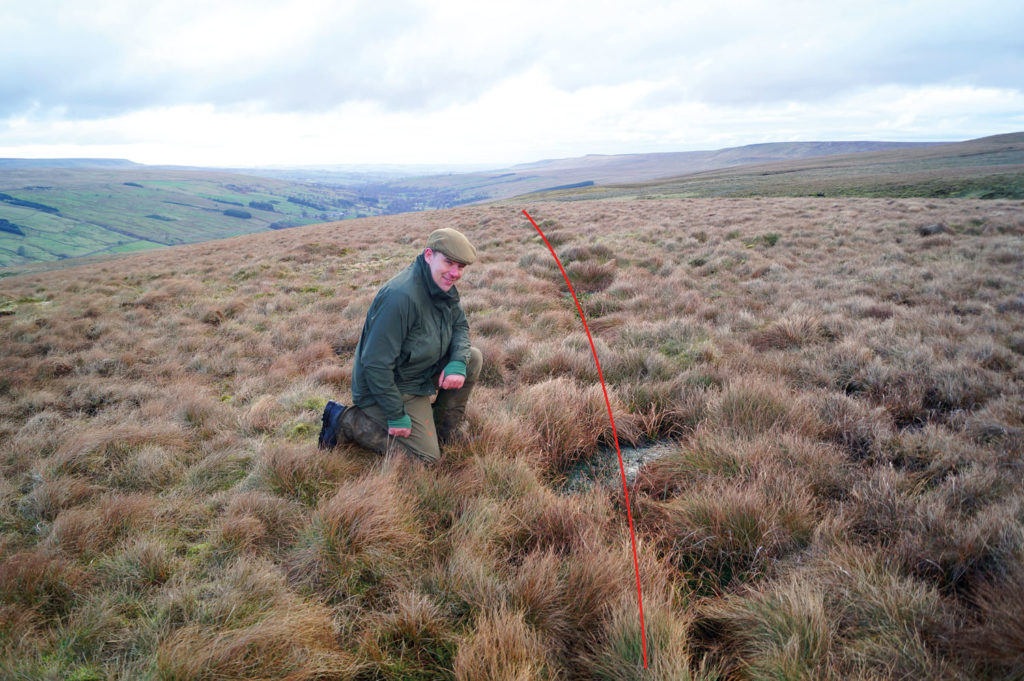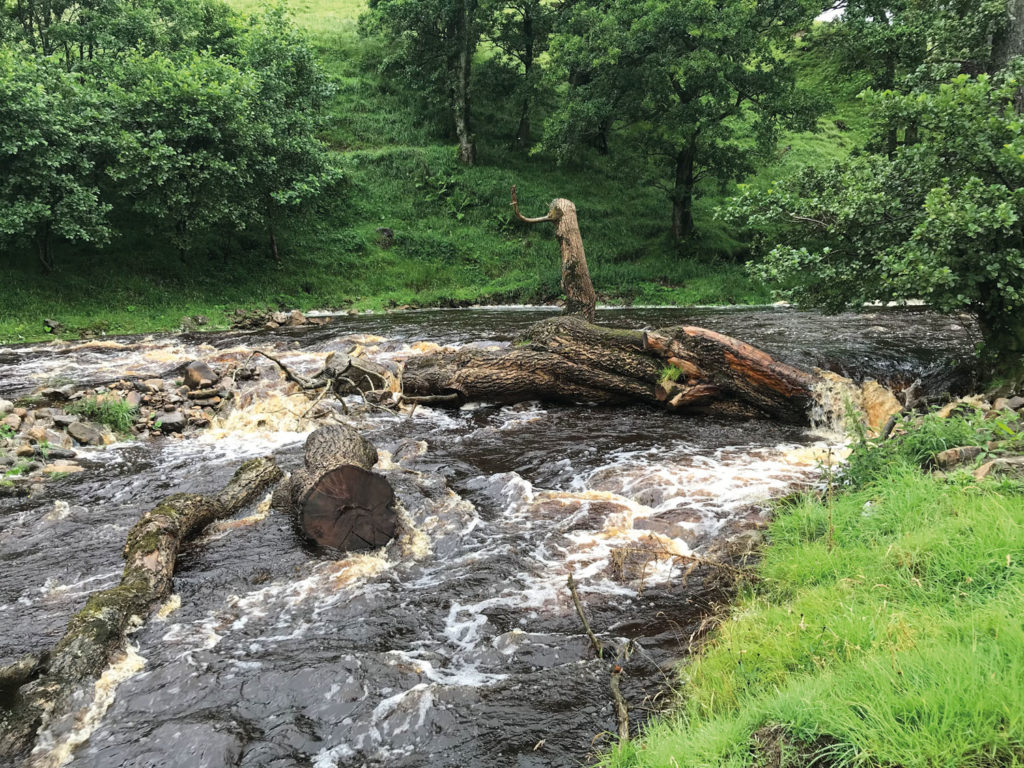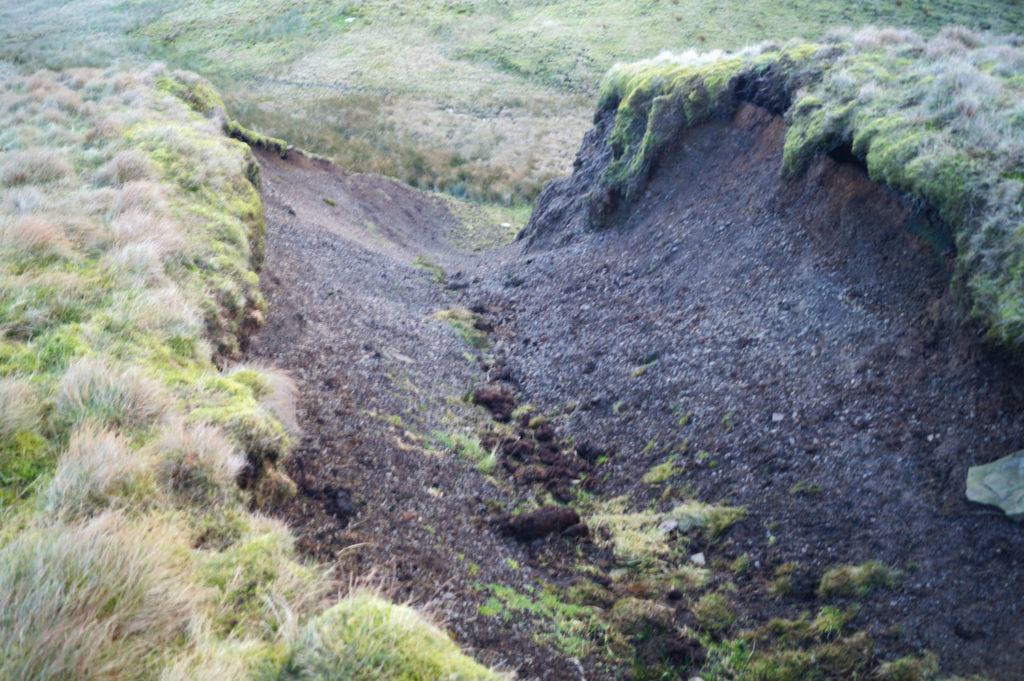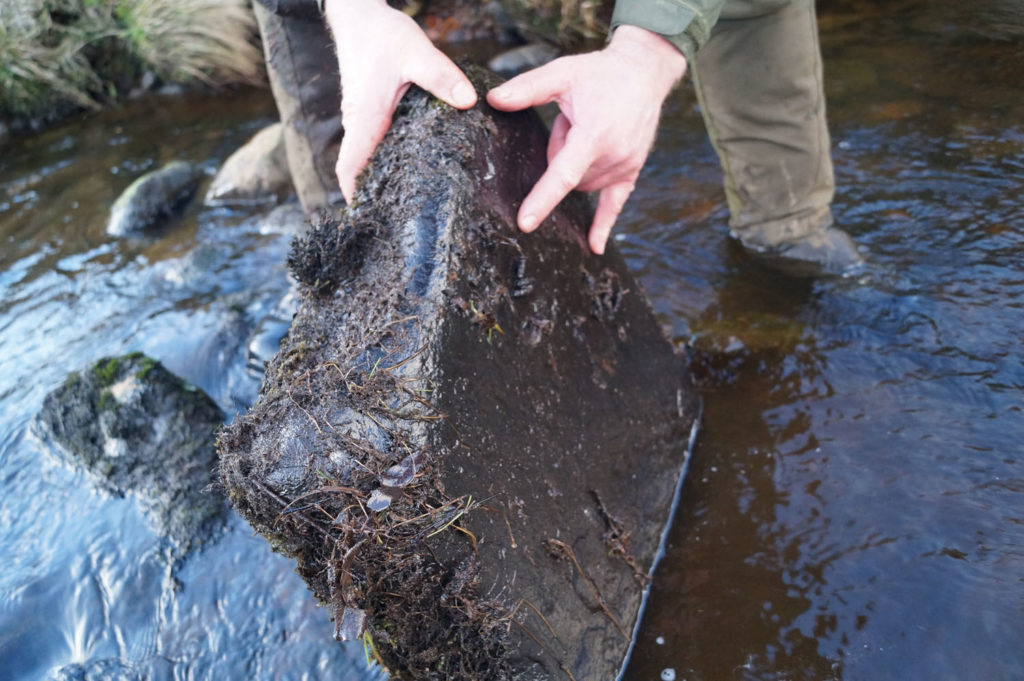With a clever combination of drain blocking, and grazing, James Mawle has reversed the fortunes of the river on his family farm

The English uplands are the source of a large proportion of the nation’s drinking water. James Mawle’s family farm Coverhead, North Yorkshire, contributes to that vital supply and has demonstrated how good grouse management balanced with farming can help to deliver clean water and mitigate the risk of flooding in towns downstream.
By holding back rainfall on the hills, the flood peak, which is the large body of water that does the damage, can be reduced. Good water management also improves the moor’s capacity for capturing carbon. Carbon-storing peat is formed when vegetation decays in a wet environment, but when peat dries out, it triggers bacterial processes that release CO2 as a greenhouse gas. This dry peat is prone to erosion, with rains washing it into the rivers and colouring them brown. Once it has tainted the rivers, the Dissolved Organic Carbon (DOC) is difficult and expensive for water companies to remove, but keeping the peat wet can help avoid this process.
Farm facts
- Location: North Yorkshire
- Type of farming: Beef, sheep
- Acreage: 5,000 (3,000 moorland including blanket bog, 2,000 below including woodland and improved in-bye land, wetland, rough pasture and 200 acres of arable)
- Funding grants: HLS
Many of the benefits of rewetting moorland can be achieved by blocking up the open ditches or ‘grips’, which were dug after World War II to increase agricultural production. Government funding to encourage farmers to drain the peat in this way continued until the 1980s. Grouse moor managers are often blamed for draining the uplands, but the boom in grouse shooting between 1880 and 1940 proves large numbers of birds were present without any drainage. James said: “Anyone who tells you these moors were drained for grouse is not clear on their facts. There is no advantage in drying out the ground, and if grouse chicks fall into a grip they are lost.”
These days, ironically, it is moorland managers like James who are blocking the grips up to preserve the peat and hold water on the hill. In the North Pennines AONB alone, 4,370 kilometres of drainage ditches have been blocked. He said: “I have never been a fan of the grips; livestock get stuck in them and they make it difficult to travel across the moor. Once I discovered their impact on carbon release and flooding, blocking them up became the obvious thing to do.”

The effect of grip blocking at Coverhead has been dramatic, transforming the River Cover, which runs through the farm. Previously, when it rained, the water would pour off the hill causing a spate. Now it runs down much more gradually, resulting in lower peak flows and higher minimum flows. James said: “I have seen a three-foot bore of water and rocks come down this river; it was quite scary. Before we blocked the grips, the river was either a raging torrent or a dry boulder field. It still rises and falls but it is a lot more measured, with a decent minimum flow in the dry times. It is also much clearer, with far less brown staining.”
When the grips were still in operation the river was trapped in what could be described as a self-harming state. Sudden heavy floods would dislodge stones and boulders, which would become part of the torrent gouging out the riverbed as they moved. Anything smaller than a cricket ball was washed away, leaving the larger rocks sitting loosely against each other. Even a moderate spate would cause them to roll, becoming a meat grinder for aquatic insects. After the grips were blocked, these large boulders moved less, and smaller stones infilled between them. Sand and silt then built up around the smaller stones, effectively ‘concreting’ them in place.

Once they stopped moving, the boulders gradually became covered in moss and river weed, increasing friction in the riverbed and further slowing down the water flow. Where there was almost no fly life, now caddis larvae can be found under every large stone. James said: “It’s as if the rocks have been switched from bad to good.”
Although rewetting the moor has lots of benefits, too much water round the roots can stress the heather and reduce its vigour. But James believes this can be mitigated and is not a reason to avoid grip blocking. In recent times, grip blocking has often been accompanied by a drastic reduction in grazing for conservation reasons, which may be counterproductive. If the heather is stressed by rewetting and then swamped by fast-growing grass unchecked by grazing, it can become overwhelmed. At Coverhead the heather is doing well on the rewetted ground thanks to careful manipulation of the grazing regime.
James said: “We are very fortunate in that all the grazing and sporting rights are in hand, allowing a holistic approach to be taken. Between June and December each year Highland cattle graze parts of the moorland that we have re-seeded with heather. Their moderate weight and big hooves mean they do minimal damage to the ground, and their large rumens enable them to thrive on huge quantities of poor-quality forage. In addition, unlike sheep, they graze non-selectively, removing large amounts of grass and rushes and allowing the light and air to get to the young heather plants.”
Peat-forming sphagnum moss also seems to benefit from cattle on the moor, with a very strong recovery seen in grazed areas. Sphagnum is a moisture-loving plant, so it has been helped by the rewetting of the moor, and a good covering is a sign that the peat below is sufficiently saturated and stable. It can happily grow alongside heather and, in some cases, a surprising symbiosis can occur. The heather stops trying to root into the peat and instead starts growing hydroponically in the sphagnum. When heather does this, its vigour and nutritional value increases and the grouse benefit in turn. James said: “It is a virtuous cycle with the cattle benefiting the blanket bog, which in turn supports the grouse. Farming, conservation and shooting help sustain each other. A win-win outcome.”

Though the river is hugely improved, James believes there is still much work to be done. 40 years of spates caused by draining the moors has washed out three feet of river bed. As a result, the river now runs in a much bigger channel and in spate the water no longer breaks the banks and dissipates its destructive power onto the flood plain. The Cover has also been affected by a long history of straightening for a range of reasons. Each time the river was straightened it became shorter, steeper and more powerful, losing about a third of its natural length through the farm over the years.
Conservation in numbers
- 200km of grips blocked
- 200 acres reseeded with heather
- 50% planned increase in length of river
- 300% planned increase in holding capacity of the river
Together with the Yorkshire Dales Rivers Trust and Leeds University, Coverhead aims to restore the meanders and reconnect the river with its flood plain. He said: “The project has the potential to increase the length of the river by 50% and because the gradient will be gentler, the water will run slower, meaning we could double or even triple the volume of our river.”
James hopes that the combination of river rewinding and grip blocking will eventually allow fish to return, adding an additional revenue stream to the integrated approach, which is vital for the long-term viability of the moorland and river restoration. He said: “When we came here in 1982 the old keeper could remember salmon under the bridge, but there weren’t any spawning gravels. Now you can see vegetation returning to the edges and smaller stones settling in the bed. The sea trout have returned and I’d love to see salmon back too.”
This case study is taken from our book Moorland Conservationists, available here for just £3.99.
